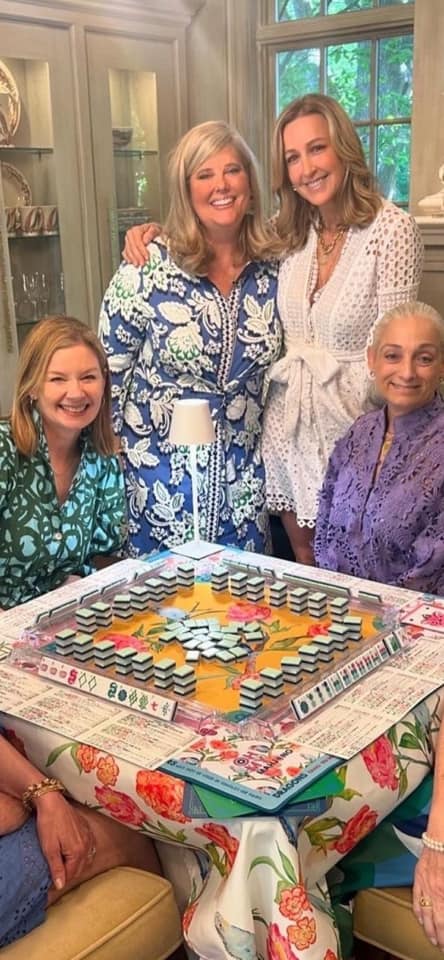How Can We Help?
STACKS (Article 199)
The primary purpose of the “Stacks” house rule is to quicken the game. The name of the house rule varies by region, so it may be called Pyramids, Towers, Muddle, Tulsa, Key West, Six Pack, or Grab-and-Go.
All players mix the tiles as usual, but the walls are not built now. Instead, the tiles are pushed to the center of the table, leaving space in front of each player’s rack.
Each player takes 13 random tiles for their dealt hand, and East takes one additional tile.
Each player creates an autonomous Charleston in front of their rack. Some groups use six stacks, and some use seven. If only six stacks are used, random tiles in the middle of the table are used for the courtesy pass. Here are the formations to choose from:
Towers (image): Seven verticles of three tiles high
Houses/Pyramids: Seven pyramids of three tiles each, two flat with one on top
Stacks:
- Stack 1 Compulsory right/across/left using three tiles wide and three tiles high
- Stack 2 Optional right/across/left using three tiles wide and three tiles high
- Stack 3 Optional across using three tiles wide in a single level
Each player puts their outgoing passes upside down in the center of the table and then takes their incoming passes from their autonomous stacks.
If players do not want to do the second Charleston, they do their optional across pass.
The unused stacks are disassembled and added to the pile in the center of the table.
The tiles are mixed and built into walls as usual.
East discards to start the game.
The variation within the variation is that some groups do not build walls. To start a turn, they pick a tile from the pile’s center in the table’s center. This house rule is called Messy Mah Jongg and supposedly quickens the game.

CREDIT
Towers. Ashley Gomez and Linda Casey of the Dallas Mahj Club from the Mah Jongg That’s It Facebook Group https://www.facebook.com/share/p/EAXYCwoRaXeFTZLX/
